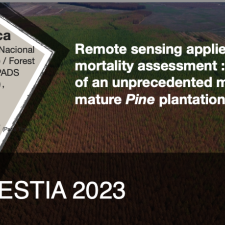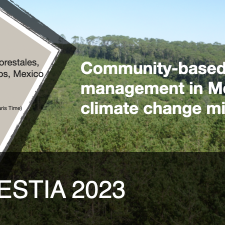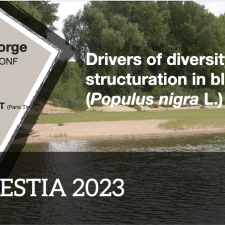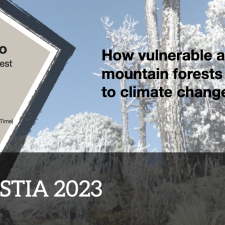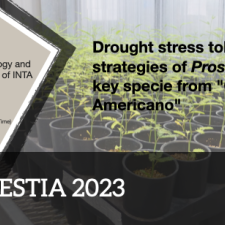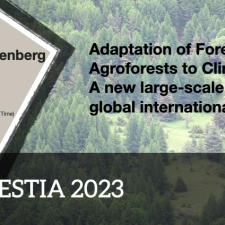Notice
#3 High Andean Forests: challenges and opportunities
- document 1 document 2 document 3
- niveau 1 niveau 2 niveau 3
Descriptif
Abstract
High Andean forests are biodiversity hotspots that play an important role in the provisioning of vital ecosystem services such as regulation of the water cycle, formation and conservation of soils, support of biodiversity, among others. Polylepis is the dominant genus in the high Andean forest vegetation and they have a crucial ecological role. Polylepis forests harbor unique biodiversity, including several highly specialized, often range-restricted and threatened bird species. However, these forests are highly endangered by climate change, habitat fragmentation and anthropogenic disturbances, and many of their biological aspects are still unknow. It has been estimated that over 90% of Polylepis forests have already been lost in Peru and Bolivia. The high Andes are expected to undergo severe changes in the coming decades because of on-going land-use change and climatic change likely threatening Polylepis forests even more. Polylepis forests have a low ability to colonize dens grasslands and low seed dispersal ability, severely limiting the ability of the forest to spread and to track climatic conditions. As a result of all the above, Polylepis forests have been listed as one of the most endangered woodlands ecosystems in the world and the conservation of the remaining forests stands has given high priority. Taking a critical look at the limitations of current knowledge of the biological aspects of Polylepis forests and proposing a research agenda to fill the knowledge gaps will help to the conservation action of these forests.
Thème
Dans la même collection
-
#7 Remote sensing applied to forest mortality assessment : the case study of an unprecedented morta…
GaticaGabrielSEMINAR # 7 « Remote sensing applied to forest mortality assessment : the case study of an unprecedented mortality event in mature Pine plantations in Argentina » Dr. Gabriel Gativa CIGEOBIO
-
Webinaire international – Laboratoire International Associé FORESTIA
RozenbergPhilippePortéAnnabelJesúsVargas-HernándezGuillerminaDalla-SaldaFernandezMaria-ElenaMarcucci PoltriSusana NoemiDuplex France-Argentine à l’occasion du 5ème anniversaire du Laboratoire international associé FORESTIA
-
#6 Community-based forest management in Mexico and climate change mitigation
Angeles-PérezGregorioSEMINAR # 6 : "Community-based forest management in Mexico and climate change mitigation " Gregorio Ángeles-Pérez (Colegio de Postgraduados, Mexico)
-
#5 Drivers of diversity structuration in black poplar (Populus nigra L.)
JorgeVéroniqueSEMINAR #5 "Drivers of diversity structuration in black poplar (Populus nigra L.)" Dr Véronique Jorge, UMR BIOFORA, INRAE/ONF, Orléans September 8th, 3pm CET (Paris Time)
-
#4 How vulnerable are the high mountain forests of Mexico to climate change ?
Gómez GuerreroArmandoSEMINAR # 4 "How vulnerable are the high mountain forests of Mexico to climate change ?" Dr Armando Gómez Guerrero Graduate program in Forest Science, Colegio de Postgraduados, Mexico
-
#2 Drought stress tolerance strategies of Prosopis alba, a key specie from "Gran Chaco Americano"
DiegoLopez LauensteinSEMINAR # 2 : Drought stress tolerance strategies of Prosopis alba, a key specie from "Gran Chaco Americano", Diego López Lauenstein, Institute of Plant Physiology and Plant Genetic Resources of INTA
-
#1 Adaptation of Forests and Agroforests to Climate Change: A new large-scale, long-term, global in…
RozenbergPhilippeSEMINAR # 1 : "Adaptation of Forests and Agroforests to Climate Change: A new large-scale, long-term, global international initiative" Philippe Rozenberg (INRAE Val de Loire, Orléans, France)


